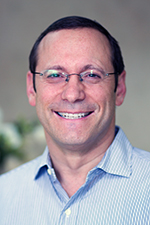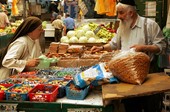By Gedaliah Borvick


JERUSALEM — How does a sleepy community become a hot residential destination? Sometimes the addition of a new train station can turn a town into an “up and coming” bedroom community of a thriving metropolis. Frequently the creation of a new business hub or a new mall lures residents to the city. Interestingly, sometimes the rejuvenation of an iconic landmark can help energize a community – as we have witnessed in Nachlaot, which houses the historic Shuk Machaneh Yehudah.
I have vivid recollections from over thirty years ago, heading off with my rebbe to Machaneh Yehudah, the outdoor market also commonly known as “the shuk”, to purchase fruits and vegetables for Shabbat. A lot has changed since then. Nowadays, one can purchase almost anything imaginable, including food, clothing, jewelry, art, flowers and housewares.
Fascinatingly, the shuk has also become a major restaurant center. When my children wanted to go out to Jerusalem for dinner this past summer, their restaurant of choice was Pasta Basta in the shuk. When I had a business meeting and the banker suggested fish and chips, where did we trudge off to? Of course, to the eponymous eatery in the shuk. And when young people want an authentic Jerusalem pub experience, they often go to one of the shuk’s bars, which offer a casual and welcoming setting.
The market dates back to the end of the nineteenth century, coinciding with the winding down of the Ottoman period. In its early years, farmers would gather at the shuk to sell their produce to the locals. During the British Mandate Period, from 1917 until 1948, the market began to expand. Sensing opportunity, in the 1920s the famed Eitz Chaim Yeshiva, located around the corner on Yaffo Street, had an inspired fundraising epiphany and built a row of shops, and collected rent from the merchants to generate income for the yeshiva.
After the creation of the State of Israel, the market continued to develop and expand. Starting in the 1980s, significant renovations were made, but at night the shuk emptied out.
In 2002, Café Mizrachi opened as the first restaurant within the shuk. After initial skepticism, the idea of dining in the midst of the hustle and bustle caught on, and many more bistros opened. Today, there are approximately thirty eateries within the shuk’s confines, which attract foodies who delight in the tremendous diversity of cuisines. In addition, there are over a half dozen bars, which offer an authentic vibe, either via their live music or their local crafted beers.
Nachlaot’s neighborhoods were established beginning in the 1870s to alleviate the Jews’ cramped and unhealthy living conditions within the Old City. Nachlaot’s heyday was from the 1920s through the 1950s, and then the community suffered through decades of neglect. Similar to the shuk, Nachlaot experienced a renaissance which began around twenty-five years ago. Many families were attracted to the neighborhoods’ charm, with its winding lanes, attractive courtyards and spiritual character. Some people renovated the original homes, while others preferred the beautiful luxury towers that have sprung up on the outskirts of the neighborhood.
Machaneh Yehudah and the delightful community of Nachlaot have always been a favorite attraction for tourists. As the shuk and the surrounding area continue to gentrify, more and more clients are starting to rethink the neighborhood as not only a tourist destination but also as a residential destination.
*
Gedaliah Borvick is the founder of My Israel Home (www.myisraelhome.com), a real estate agency focused on helping people from abroad buy and sell homes in Israel. To sign up for his monthly market updates, contact him at gborvick@gmail.com.